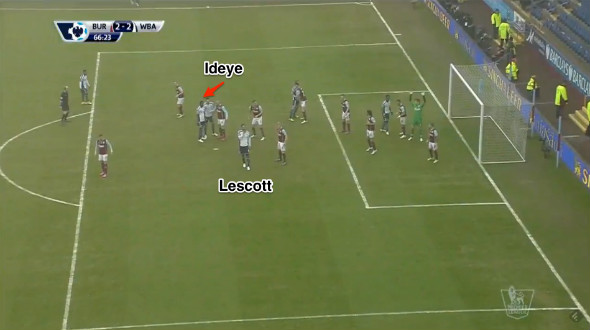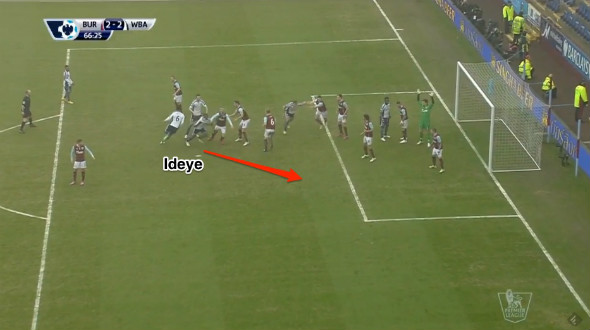Why Man Marking Doesn’t Always Work
Late Sunday evening, Michael Cox, the man behind the popular tactics site Zonal Marking, tweeted this:
Man-marking costing Burnley the win today
— Michael Cox (@Zonal_Marking) February 8, 2015
Though perhaps not the most exciting fixture on the Premier League calendar, Burnley 2-2 West Brom was significant in part because Burnley, who are currently a single point above Hull City and the relegation zone, had given up a two goal lead against the Baggies.
Both goals conceded by the Premier League newcomers came from set pieces, and both involved a chaotic mess of players running around the 18-yard box. Burnley, under manager Sean Dyche, were clearly employing a man-marking system.
There is of course an old debate in England about the benefits of zonal versus man-marking. Appearing on Sky Sports in December 2014, Jamie Carragher summed up the popular view:
The man on the street, the supporter, he wants two on the post, one up front, two on the edge, everyone marked and someone on the front space. You need 14 players! …That’s the problem with man marking, you’re not even looking at the ball because you’re so obsessed with your man. There’s for and against for both of them but this is the problem with man marking, people don’t watch the ball. Why is it that people won’t blame man marking as a system? Because it’s easier to say, ‘Oh it’s his fault, so it’s okay’. But you’ve still conceded a goal, no matter what the system.
Both Burnley goals illustrate this problem, but let’s focus instead on the second, decisive equalizer.

The moment the corner is taken. Burnley have three defenders near goal, but everyone clearly has a man closer to the edge of the 18-yard box. Both Joleon Lescott and Brown Ideye are farther out, and have markers. Lescott will use this to West Brom’s advantage …

-

-

-

-

-

-

-

-

-

-

-

-

-

-

-

-

-

-

-

-

-

-

-

-

-

-

-

-

-

-

-

-

-

-

-

-

-

-

-

-












































